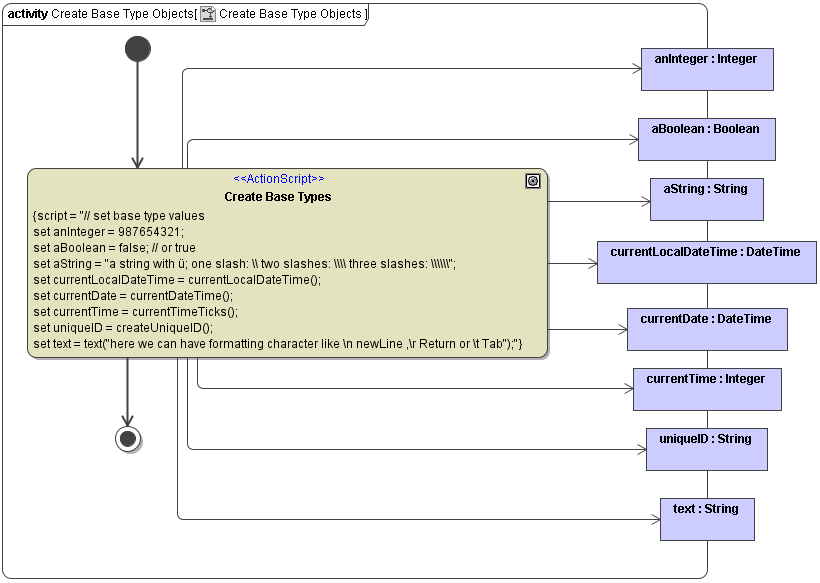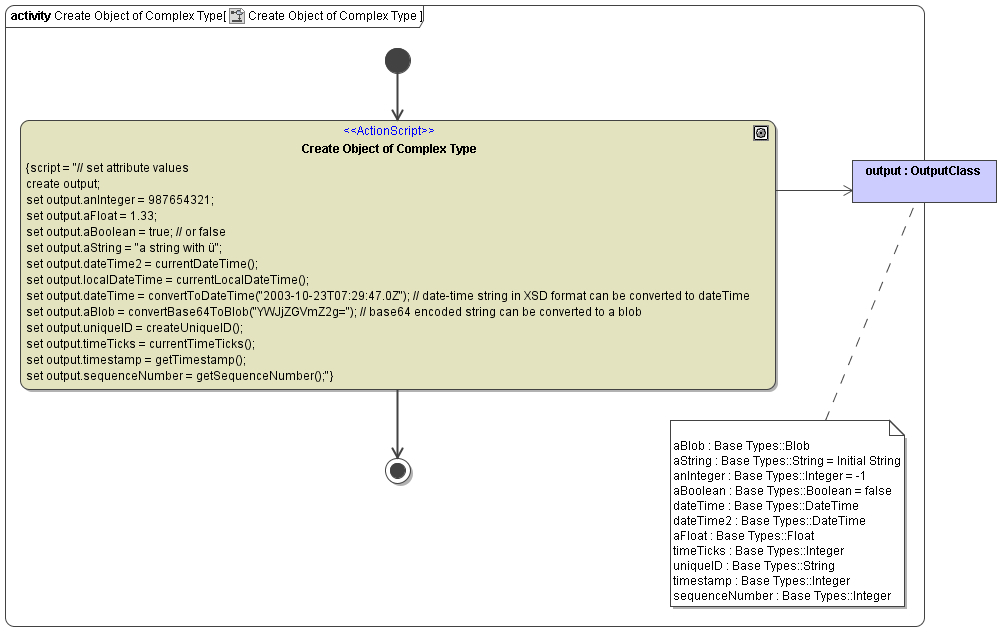set assignment statement, it is possible to create objects of base types like strings, integers, booleans, etc. whereas objects of complex types need to be instantiated (created) first with the create statement.The following examples shows how to use the set assignment statement to create base type objects.
| Syntax |
| ||
|---|---|---|---|
| Semantics | Assigns a value to anObject. | ||
| Substitutables | anObject | Can be an object node, an attribute, or an association end. | |
aValue | Can be a literal, a base type object node, or an EAL operation or expression returning a base type. | ||
| Examples |
| ||
The example in the figure below shows how to create base type objects like strings, integers, etc. Base type objects need not to be instantiated, they are created by using the set assignment statement to directly assign a value to the variable.
All variables are drawn as object nodes with all objects being of base type (see also Base Types).
Figure: Creating Base Type Objects

Attributes of an object are also assigned values by using the set assignment statement as shown in the figure below.
Figure: Setting Attribute Values

The following example shows how to use the create statement to create objects of complex type.
| Syntax |
| ||
|---|---|---|---|
| Semantics | Creates an object of complex type. The object reference is stored in anObject. Initial values defined on the class attributes will be set. | ||
| Substitutables | anObject | Can be any valid object name. | |
| Examples |
| ||
In the following cases, objects need to be created with the create statement:
In the following cases, the create statement is not necessary:
When having related classes, the instantiation of intermediate objects is not mandatory. In the example below, class A has an attribute b, which is of type B (see association). This class in turn has a string attribute named aString.
Figure: Creating Instances of Related Classes

In order to instantiate all classes and setting the string aString, not all class instances need to be created. Only the top-level class needs to instantiated as shown in the following action script:
create objectOfClassA; set objectOfClassA.b.aString ="Hello World!"; |
Scalar base type objects are never created using the |